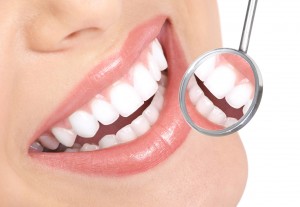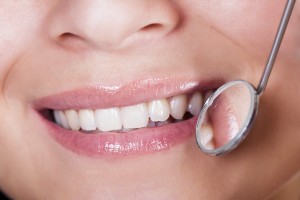 Sealants, also known as dental sealants, are made out of a plastic material that’s placed on the molars and premolars for added protection against tooth decay.
Sealants, also known as dental sealants, are made out of a plastic material that’s placed on the molars and premolars for added protection against tooth decay.
The main reason why sealants are primarily placed on the permanent back teeth, or the molars and premolars, is that these teeth have fissures or grooves. These deep fissures or “pockets” can trap bacteria and food particles, as well as are difficult to clean. This combination makes the permanent back teeth vulnerable to tooth decay. Although using fluoride toothpaste and getting fluoride treatment at the dental office does help provide protection to all the surfaces of your teeth, your permanent back teeth need extra protection and that’s where dental sealants come in.
Dental sealants help make sure that the grooves and fissures are not at more of a risk for plaque buildup and tooth decay as your other teeth are.
Are dental sealants applicable only to the permanent back teeth?
Although dental sealants are usually placed on the premolar or molars, dental sealants can also be used on other permanent teeth, so long as they have grooves or pits.
In some children, for example, their baby teeth may also have grooves that could benefit from having dental sealants placed on them.
Are dental sealants exclusive to children?
No. While children are the ones who usually get dental sealants on their molars and premolars, adults too can sometimes have dental sealants placed on their back teeth. That is, if their teeth with grooves and fissures do not have fillings or dental sealants yet.
How are dental sealants placed?
The dentist first cleans the tooth surface thoroughly using a paste and rotating brush. Then, the dentist washes the tooth and lets it dry for a few seconds or minutes. The dentist then appliances an acidic solution on the grooves of the tooth’s chewing surface. The solution is left there for a few seconds before the dentist rinses it off. The use of the solution helps create small microscopic areas in the grooves and fissures, as well as fine rough surfaces. The rough surface and microscopic areas help the dentist attach the dental sealant to the tooth.
Once the tooth has completely dried up, the dentist places the dental sealant on the tooth. The sealant is then hardened using a light. Although some dentists may choose to use a two-component dental sealant that sets and hardens on its own.
Once done, your dentist will send you on your way and you can chew on your tooth again as you did before.
Dental sealants have been used to great effect since the 1970s. There are enough studies to show how dental sealants can help tremendously in lowering one’s risk for tooth decay, essentially preventing it on the chewing surfaces it’s applied to. Dental sealants have also been known to last for years, if not decades. Although if you want and if deemed necessary, the dentist can place a new dental sealant on your permanent back teeth.
While dental sealants and fluoride treatments tremendously help lower your risk for tooth decay and other dental problems, it’s still important to take proper care of your teeth at home and to visit the dentist regularly for checkups and professional cleaning.

 The enamel is the hard, protective shell that covers much of the surface of your teeth. It is strong and durable. It also happens to be your teeth’s natural, built-in defense system against various dental problems, such as cavities and tooth decay.
The enamel is the hard, protective shell that covers much of the surface of your teeth. It is strong and durable. It also happens to be your teeth’s natural, built-in defense system against various dental problems, such as cavities and tooth decay.





